Hydrangea and Sweet Potato Vine, 116 Lafayette Avenue, Fort Greene, Brooklyn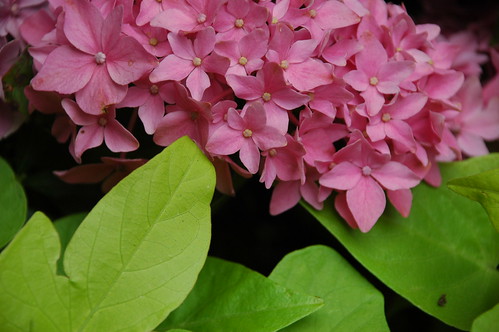
Numbered as they were in the tour guide. Listed in the order I visited them.
Stop #6: 42 South Portland Avenue











Related posts:
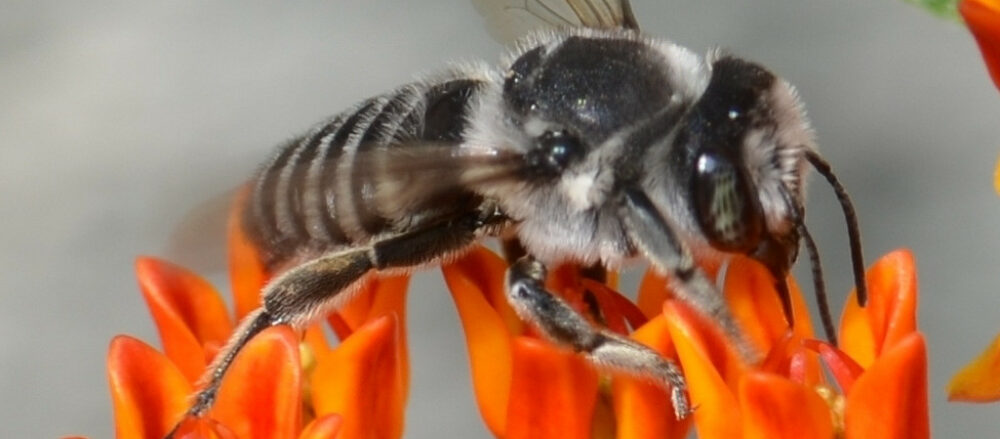
Hydrangea and Sweet Potato Vine, 116 Lafayette Avenue, Fort Greene, Brooklyn
Numbered as they were in the tour guide. Listed in the order I visited them.
Stop #6: 42 South Portland Avenue











Related posts:
Roses climbing on steel beam, 222 Washington Avenue, Clinton Hill, Brooklyn.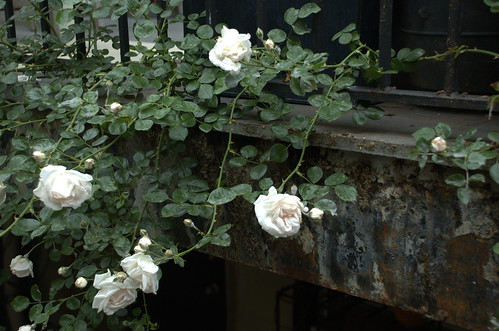
Numbered as they were in the tour guide. Listed in the order I visited them.
Stop #16: 152 Willoughby Avenue









Stop #15: 227 Washington Avenue












Stop #14: 219 Washington Avenue







Stop #11: 222 Washington Avenue






Stop #12: 218 & 216 Washington Avenue




























Stop #13: 190 Washington Avenue















Clinton Hill (Flickr Collection)
The 10th Annual Brownstone Brooklyn Garden Walk
Brownstone Garden Walk, 1/3: Fort Greene
Brownstone Garden Walk, 3/3: Prospect Heights
Shady Beauties at 116 St. Mark’s Avenue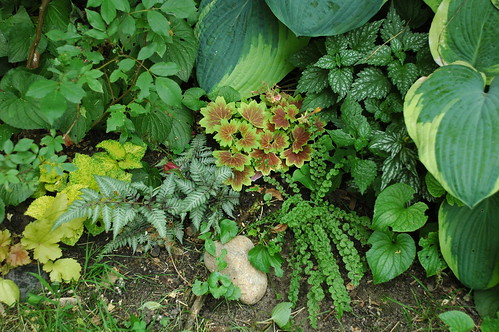
Numbered as they were in the tour guide. Listed in the order I visited them.
Stops #5 and 4: 493 and 491 Dean Street















Stop #3: 110 St. Mark’s Avenue

















Stop #2: 116 St. Mark’s Avenue












Stop #1: 118 St. Mark’s Avenue








Related posts:
Update, 2007.06.05: Read about my impressions and see photos from my visit.
Don’t know why I’m only just hearing about this. This is only the second garden-only tour in Brooklyn that I’ve heard of. There should be scores of them.
Seventeen private gardens may be visited on this self-guided tour through the three historic Brooklyn neighborhoods of Ft. Greene, Clinton Hill and Prospect Heights. Free shuttle van service will be provided, circling between the three neighborhoods. This may be your last chance to see a pair of adjacent gardens in Prospect Heights. These two gardens occupy the western edge of Brooklyn’s first botanic garden, Parmentier’s Horticultural & Botanic Gardens. They currently fall within the footprint of Bruce Ratner’s proposed 22-acre Atlantic Center and are threatened with condemnation through use of eminent domain.
Highlights of the tour include a triple lot garden with several cascades & ponds, a double lot garden with brick cottage & mature trees. Both of these gardens evolved over a long period of time created by individuals, avid gardeners,long time residents of Fort Greene and Clinton Hill, who owned adjoining properties and instead of filling space with building additions, used the empty spaces to create garden oases.
The Brownstone Brooklyn Garden District, sponsor of the Garden Walk, is a coalition of three Downtown Brooklyn neighborhoods, Fort Greene, Clinton Hill and Prospect Heights, with a common interest in improving quality of life through greening of the urban environment. Garden Walk ticket sales support the Annual Fall Bulb Give-Away for planting flowering bulbs in public spaces throughout the Garden District.
I’m hoping I can make it, weather cooperating.
Via Brownstoner.
Lavender border along the Cranford Rose Garden, taken May 28, 2007, by TheGirlsNY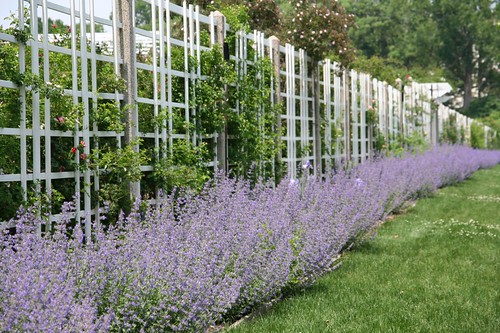
Update 2007.06.08: I selected the photo above as the BBGV group photo for June 2007. Thanks to everyone who weighed in and contributed suggestions.
Be sure to check out the comments to this post and follow the links for an interesting blog conversation about why there are so few people in these photos.
I’m a co-admin for a Flickr group, the Brooklyn Botanic Garden Visitors photo pool. In May I thought I would start rotating the group photo which represents the group in Flickr. I’m trying to pick the photo for June.
It’s a tough decision. Over 200 photos were posted in May, out of over 1,100 photos since Paul-M started the group last year. And May is such an explosion. There was the Cherry Blossom Festival, of course, but there are also tulips, azaleas, wisteria, and even roses that have started blooming.
So, help me pick. Here are a few of my favorites of the 200, in order by the date taken. Leave a comment and let me know your favorites. Or you can nominate another one from the pool. The only criteria are that the picture was taken during May 2007, and that it’s not one of my photos. I’ll make a decision over the weekend.
Pink Snow, taken May 6, 2007, by Abizeleth
Cherry Lane, Taken May 9, 2007, by Keith Carver
Tulips, taken May 12, 2007, by James Prescott
Wisteria, taken May 15, 2007, by PaulS
Borage?, taken May 29, 2007, by amg
Update, 2007.06.14: Adrian Kinloch, Brit in Brooklyn, came up with these terrific flyers and banners to promote this event.
Following the successful Brooklyn Blogfest in May, the Brooklyn Blogade is taking it on the road to different Brooklyn neighborhoods.
The inaugural event is Sunday, June 24, 2-5pm. Join us at Vox Pop, 1022 Cortelyou Road, at the corner of Stratford Road (East 11th Street).
If you want to attend please send an email to blogade.rsvp@gmail.com. We’ll email you an invitation. We will not use your email address for any purpose except for sending invitations and notifications relevant to Brooklyn Blogade. It will not be shared with anyone else for any reason.
Please RSVP with the following information:
– Your handle or nickname
– Your name (optional)
– If you have a blog or Web site, its URL
– If you live or work in Brooklyn, the neighborhood (eg: Flatbush) or
zip code (eg: 11218)
PROGRAM:
2pm: Signup/registration opens
2:30-3pm: Welcome, neighborhood orientation, and local blogger shout-out
3-5pm: The mingling and socializing continues
Vox Pop is offering food and drink specials for this event:
– $1 off veggie and turkey burgers
– $1 off pitchers of beer (Dogfish Head Craft Ale now on tap!)
You can also checkout their full food menu and micro-brew on tap.
DIRECTIONS BY SUBWAY: Take the Q Train to Cortelyou Road. Vox Pop is five blocks West (turn left as you exit the station).
By the way, the above photo was taken during the height of the streetscape work on Cortelyou Road. The back-hoe is gone now. I’ll upload a more flattering view.
Update 2007.06.11: See my photos from the tour.
210 Rugby Road, Prospect Park South Historic District, Victorian Flatbush, Brooklyn, New York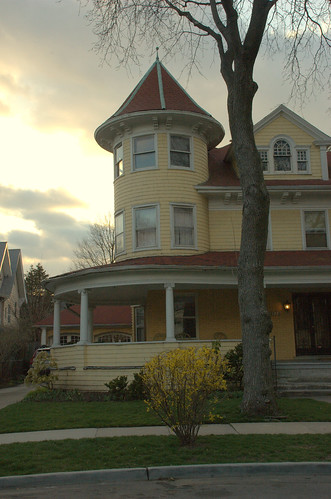
I just learned from Living in Victorian Flatbush, the blog of real estate broker Mary Kay Gallagher and company, that you can now buy tickets for the Flatbush Development Corporation‘s 2007 Victorian Flatbush House Tour.
The house featured in the photograph on FDC’s House Tour page is 210 Rugby Road. I hope this means it’s on the tour this year. This is in the Prospect Park South Historic District, and it’s one of my favorites. At the top of this post is one of my photographs of this house. It’s a perfect Queen Anne Victorian, with a turret and wrap-around porch. It’s also visible from Beverly Road, so I pass it nearly twice every weekday going to and from the subway.
One change this year is that the tour starts out at Temple Beth Emeth at the corner of Church Avenue and Marlborough Road. This is on the north edge of the Prospect Park South Historic District. The past two years, the starting point has been the Flatbush-Tompkins Congregational Church in the Ditmas Park Historic District.
I’m disappointed in two more changes for this year’s tour:
Corrected subway directions: As of 5/16, the subway directions on FDC’s Web site are still incorrect. I contacted them by email and they’re in the process of updating their materials.
Take the Q train to CHURCH AVENUE, not Beverley Road (or Beverly, both spellings are used). Exit at the Church Avenue (south) end of the station. The start of the tour, Temple Beth Emeth, is on Church Avenue at the corner of Marlborough Road, just three streets West of the station. (Marlborough Road is the same as East 15th Street.)
You can walk 2-1/2 blocks North to Church Avenue from Beverley Road to get there. It’s just a longer walk. On the other hand, it’s also a prettier walk, since you walk through the Prospect Park Historic District. Take your pick!
This past Saturday, my partner and I and a mutual friend visited the Brooklyn Botanic Garden, which is just three subway stops from our house.
Descriptions and more photos available on flickr.
CORRECTION: The insect I off-handedly identified as a “butterfly” on flickr is actually Epargyreus clarus, the Silver-Spotted Skipper. They were quite common the day of our visit. I saw them both in the Mixed Perennial Border, and in the Native Flora Garden.
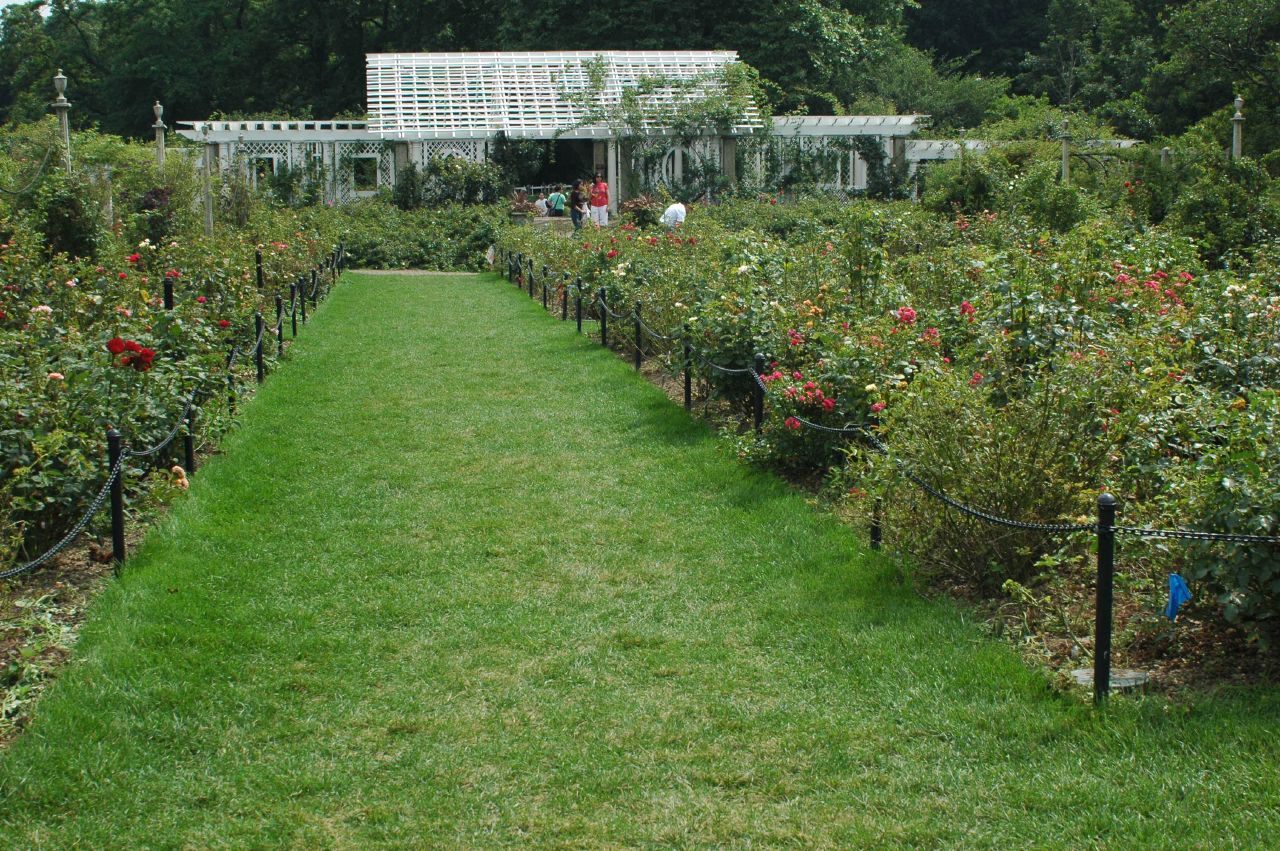
In response to Black Swamp Girl‘s comment and question: The Cranford Rose Garden was disappointing. This was definitely past peak rose season. I had wanted to go during June – the peak month – but was unable to get there at that time. Most of the roses were not blooming. In addition to scant bloom, the plants overall were a bit the worse for wear. We had over a week of heavy rain every day until this past weekend. We had pea-sized hail on the 4th of July. So the poor things were not looking their best.
I’m not a fan of “rose gardens” where there’s nothing but. Monocultures are rarely a good idea. I do want to have some roses in my mixed borders at home, though. I wanted to research some possibilities during the visit. I just didn’t see anything I would have wanted in my garden!
COTS #10 is up on Science & Sensibility. No, it’s not the Carnival of the Sycophants. “Spineless” as in:
… Of the two and a half million animals so far described considerably less than 60,000 fall into the sub-phylum Vertebrata [the spined] – that is, less than three percent of described animals build their bodies in the same way we do. Even that number is a great under-estimation; there are probably at least 10 million arthropods and very few vertebrates not yet known to man. …
So, fellow gardeners, when you’re feeling outnumbered by the beasties in your garden, you are.
Your host got picked up for this issue:
More beetle news from Xris of Flatbush Gardener who reports that the state of New York has decided to change the state insect to one that actually lives in the state of New York.
Even cooler, several of my favorite bloggers are also in this issue, including:
And there’s several blogs in COTS #10 new to me which are going on my rolls.


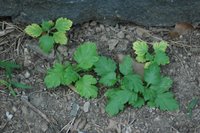
Artemisia Vulgaris, Common wormwood or Mugwort, is a perennial herbaceous (at least in Zone 7a) plant in the Asteraceae (Compositae), the Aster, Daisy or Sunflower family.
The emerging foliage, as seen in the third photo above, looks like Chrysanthemum. The maturing plants, as in the first two photos, remind me of ragweed. The pleasant (to me), pungent scent of the leaves alone identifies it as an Artemisia, a sage. The semi-woody stems and distinctive scent distinguish it from Chrysanthemum or ragweed.
The flowers individually are insigificant. When in bloom, collectively the flowers don’t offer much either, forming just a greyness around the tops of the plants, as if they had lint stuck between their leaves. I’ve seen some listings of more ornamental selections with more prominent flowers, and even one with variegated leaves.
“Wort” is an old suffix for plants traditionally used for medicinal and healing purposes, for example: Lungwort. I don’t know what “Mug” identifies that would need healing. It also has culinary uses as a seasoning. It’s widely available commercially, sold as an herb. You’re welcome to have mine for free, if there’s any left after I’m done ripping it out. Artemisias also have toxic properties. Among other applications, A. vulgaris has been used as a natural abortifacient in early pregnancy. Another well-known member of the genus is A. absinthium, Absinthe.
It has escaped cultivation and is reproducing in the wild. Several sources categorize it as invasive. Once established, it can be difficult to eliminate through mechanical means. It’s common along roadsides in New York City. The photos from my garden above show the long, rambling root system, and how easily it regrows from any small part of the root left behind. I expect to be pulling this up for years from my garden, until I’ve exhausted it.
References:
Technorati tags: Artemisia vulgaris, Mugwort